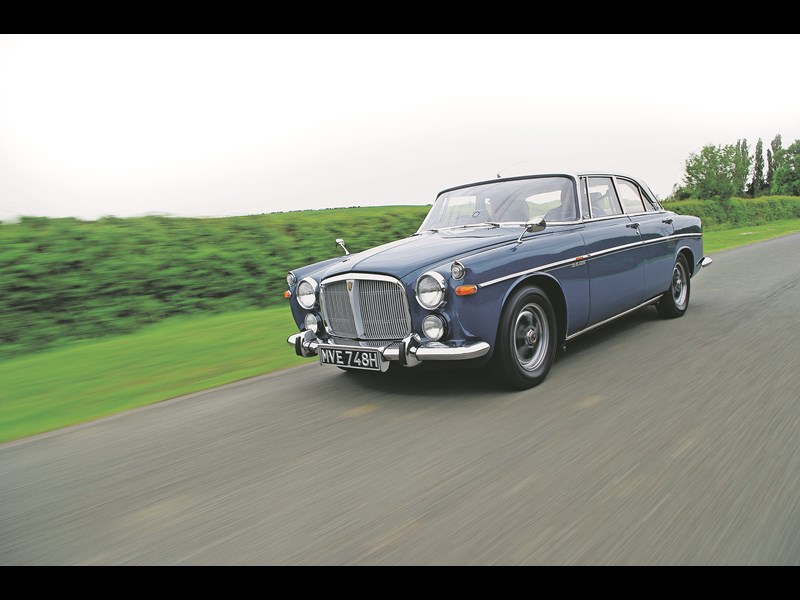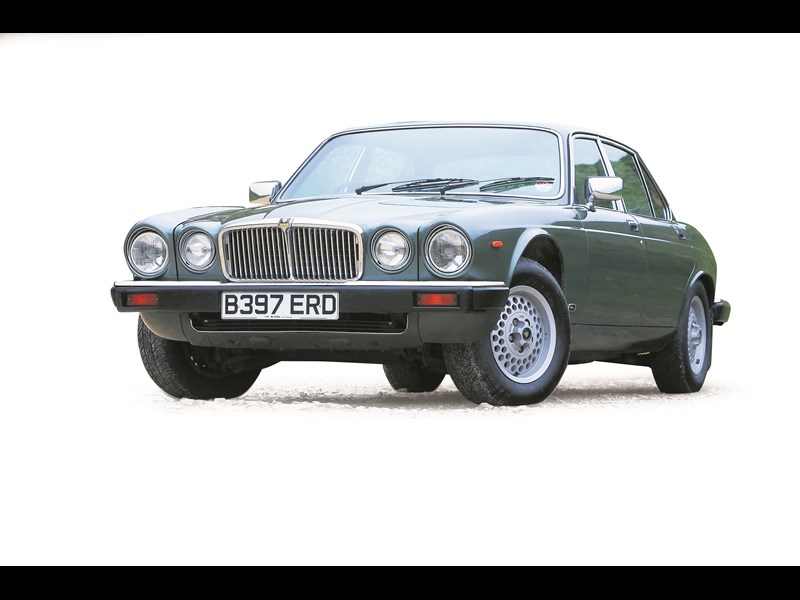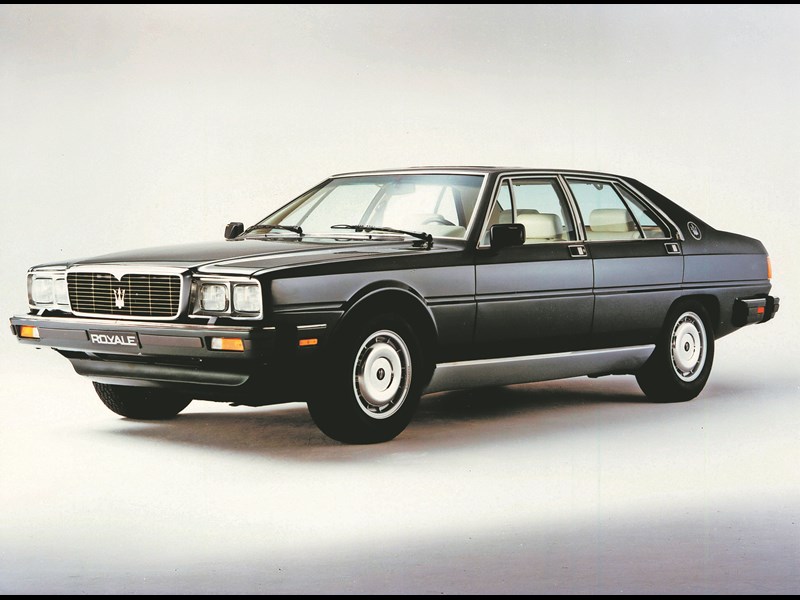Not everyone wants to dash around in a sports car, or enjoy bare-bones motoring basics in a Minor, 2CV or Fiat 500. There’s a lot to be said for enjoying a bit of luxury lifestyle, not least because you can often have it for the same price or even less than those omnipresent sporty rides or tiny saloons. Yes, for a budget of less than £10,000 you can sign up to a taste of the lifestyle originally preserved for the world’s elite – chairmen and chart-toppers, sheikhs and politicians. Obviously it will cost you a bit more at the petrol pumps, but how many miles do you drive your classic each years anyway? Do the sums and the actual cost difference might surprise you. Call it 3000 miles. Versus an MGB or TR that does 26mpg, something big and comfortable that sups a gallon every 16 miles will cost you the far from princely annual sum of £360 extra in fuel.
The choice is wide depending on your preferences of badge and era. Here are 10 suggestions to tempt you with. It could be time to put a bit of waft in your life – and you know you’re worth it!
Citroën CX Prestige - PROJECT £800CONCOURS £6500
For the ultimate in cossetting rides, there really is nothing to match a long-wheelbase CX – and the Prestige, with its higher roofline, is also truly cavernous inside, particularly in the back. For years the car of choice for French presidents, the Prestige is packed with comforts and soft leather seats, rear footrests, plus, of course, the usual smattering of Citroën quirkiness. You kind of expect the single-spoke steering wheel and spaceship dashboard, but there’s also the strangely quilted and buttoned leather or cloth upholstery, and a stereo mounted sideways next to the handbrake in some versions. All things that let you know you’re somewhere else; somewhere rather special.
We also have to mention the Holy Grail of Prestige (and CX) ownership: the Prestige Turbo. Rare even in its homeland, just five were built in right-hand drive, although they do turn up on the market from time to time. A nice one sold at ACA last year for £6400, which looked cheap.
Easier to run than you might think – with the help of a Citroën specialist – the CX’s main enemy is rust, which can even break out in the roof. But don’t be put off, just buy with care.
Bentley Mulsanne/Eight - PROJECT £2000CONCOURS £12,500
You could include the option of the almost identical Rolls-Royce Silver Spirit here, but is there anyone who wouldn’t prefer the kudos of the Bentley badge – especially as prices are very similar? There’s even a turbocharged version of the Mulsanne that can still be picked up within our budget. Imposingly big, you get an almost peerless ride thanks to the Citroën-style oleo-pneumatics at the rear and effortless pull from the understressed V8 – 50% more of it in turbo form. The Eight, from 1984 on, brought an extra touch of Bentley-ness with its mesh grille, front spoiler and twin headlamps, and was sold for £10,000 less than a Mulsanne without losing out on too much of the luxury.
Previous history is an important consideration when buying one of these. Look for an example that’s enjoyed long-term well-to-do ownership and has been serviced by specialists, rather than something from the carriage trade that’s been run on a shoestring and moved on before its demands catch up with it. The right cars are out there, and not necessarily much more expensive than the rough stuff yet.
Maserati Quattroporte III - PROJECT £2750CONCOURS £13,000
The Quattroporte (or Royale in USA) was never officially imported to the UK, but that doesn’t stop you finding them here today – and for very tempting prices. These were exclusive, handbuilt cars and Maserati turned out less than 200 a year between 1979 and 1990. But given they cost around 20% more than a Mercedes-Benz 500SEL in the 1980s, demand was never going to be heavy. Many were sold to Arab countries and are now regularly liberated from there with quite low mileages. All were left-hand drive.
These are big cars – made to look more so by Giugiaro’s slab sides and straight lines that hide none of the bulk – and they weigh in at nearly two tonnes. Despite that, a Quattroporte doesn’t feel that big from the driver’s seat, seeming to shrink in your hands and drive like a smaller car. You can even chuck one about a bit if you don’t mind the body roll. But you’re more likely to be enjoying the powerfully high-grade ambience of the cabin, all soft leather and expensive veneers.
When buying, pay special attention to the body, as any new metal needed will have to be hand-formed. You can also expect to encounter the odd electrical problem – it goes with the territory.
Rover P5B Coupe - PROJECT £800CONCOURS £6500
Arguably the high point for Rover as a carmaker, the V8-engined P5B was not only blessed by the backsides of several British Prime Ministers but Her Majesty, too; the Queen was an owner/driver of several P5Bs, admiring the car’s excellent craftsmanship and keeping her last one until 1987.
The P5B also has the honour of being the first Rover to its soon-to-be-everywhere development of GM’s aluminium V8 engine. That alone transformed the car, which by the time of the transplant had been in production for nine years. Not only did the V8 add almost 50bhp, but its lighter weight stripped 250lb from the Rover’s bulk, and as nearly all of that had sat over the front axle, the car’s handling was transformed.
Reflecting on all this, one legendary motoring journalist summed up the P5B as ‘Outdated but highly satisfying’. That is surely also the definition of a classic car. The interior is a delight of quality leather and wraparound wood trim, and the foam-lined tool tray that slides out from under the dash is a joy to behold. Rear passengers were treated to a picnic tray and separate space heater.
Only buy the best P5 you can find, as anything else will soon end up costing you the same amount of money anyway. And remember – Coupés cost more than the saloons.
BMW E32 7-series - PROJECT £750CONCOURS £6000
BMW’s one-time range-topper is now almost a candidate for scholars of Bangernomics. Our quoted price range includes the revered 750i V12 model, but there are also two six-cylinder versions – the 188bhp 730i and 211bhp 735i. The most we could find one advertised for was £3995 and that was a full-historied 55,000-miler, which was almost an insult to the series.
These were high-end cars, packed with all the latest technological innovations that we now take for granted, such as electronic dampers, traction control, Xenon headlamps on later models, and even double-glazing on some. And that’s just a selection from the list. All of this was served up with BMW’s excellent build quality, so cars tend to hang together well and take high mileages in their stride. Being a BMW, they drive well, too, with surprising agility for such a big car. All that lets them down – at least by modern standards – are slightly underwhelming brakes, but even these can easily be upgraded.
Time can take its toll on 21- to 29-year-old cars, though. So check for leaking fuel tanks and for corrosion – particularly around sunroofs, arches and underneath – and make sure all that the electronic stuff still works, although rectification often just involves cleaning and lubricating (probably a lot of) electrical terminals.
Toyota Century - PROJECT £3000CONCOURS £12,500
OK, you’re not going to find one of these in many classic car showrooms, but they do exist in the UK and there’s also the possibility of importing one from their homeland.
So what is a Toyota Century? Nothing less than Japan’s ultimate automotive status symbol, left largely unchanged during a 30-year production run from 1967 to 1997, apart from its gadgets. By which time something that looked like a 1960s Lincoln was firmly into anachronism territory and all the better for it – an instant classic.
Everything kept pace under the skin, though, and later cars like the one pictured largely used Lexus LS400 running gear, so they’re easy to look after and will probably never wear out. Plus you can only hear the V8 running if you lift the bonnet. But it’s inside where you really feel the luxury – and we mean feel it. You’ll commonly find them with heated rear seats with a massage function, TV, video and a fridge. Leather is uncommon as the Japanese feel it’s noisy to sit on.
Mercedes-Benz 500/560SEL (W126) - PROJECT £650CONCOURS £5000
This has to be the ultimate bang-for-your-buck expression of our theme. In their day, Mercedes-Benz’s 1980s flagship models were said by many
to be the best cars in the world. Yes, even better than Rolls-Royce’s offerings. Now you regularly
see good quality S-class models selling at auctions for a couple of grand. Even one in tip-top condition won’t cost you more than £4500-£5000.
If you’re going for it, you might as well go the whole hog in long-wheelbase SEL form. Then sit back and enjoy the best materials available in late 1980s Germany, along with every technological advance then known to man, assembled to the highest engineering standards. The 560SEL cost £62,000 by the end of its life – a lot for a car now, never mind 1991 – but for that you got self-levelling suspension, ABS, anti-lock braking, cruise control, climate-control air-conditioning, powered heated memory seats, side airbags, a top level entertainment system, and an electrically adjustable steering column. Being a Mercedes-Benz, you can buy one now for around £60,000 less and all those items probably still work.
For peace of mind, we’d be willing to pay a little more for one with plenty of history, but buy one soon before word gets around.
Jaguar XJ12 SI-SIII - PROJECT £650CONCOURS £7500
A triumph of British engineering, the XJ12 is an under-appreciated classic that should probably be worth twice what you can buy them for. Perhaps they were simply around for too long and were tainted by tales of heavy thirst and association with their XJ6 twin brother, which is still seen as being a bit ‘Arthur Daley’.
The favourite has to be the SIII model, introduced in 1979 with a cleverly penned styling makeover by Pininfarina. Make it a 1981-on HE (high efficiency) model and you’ll get 16mpg or more, which is way better than the wince-inducing 12-13mpg of earlier models. As set out in the intro, it really is worth putting up with that because the XJ12 is among the best four-door GTs of all time. The super-smooth and quiet V12 engine has the pull of a muscle car, While the suspension strikes a perfect balance between a supple ride and sharp handling. All the while you’re wrapped in an embracing cabin that says ‘I’ve made it’.
Buying one can be a bit of a minefield, however, as many have sat idle for considerable lengths of time, and they don’t like that. Best to seek out something that has either been properly recommissioned with bills to prove it, or else been in fairly regular use by an enthusiast.
Vanden Plas 4-litre R - PROJECT £1250 CONCOURS £8000
To some this might be the ultimate expression of a BMC ‘Big Farina’, but it does have pedigree. Vanden Plas performed a clever restyle that dramatically cleaned up the roofline and all but eliminated the fins from the rear wings. Under the bonnet is a genuine Rolls-Royce all-alloy straight-six engine – never mind that they were left over from a cancelled War Department contract.
So we’ve got coachbuilding, big names,and a cabin that is almost exactly what you were expecting: lashings of slippery leather and enough wood to build a dining table. In fact they almost did – there are the traditional VDP picnic tables that fold into the seat backs.
All that lets the side down are quarterlight catches and an indicator stalk of lowly Morris Minor heritage, plus the fact that you have to wind the windows by hand.
But none of that really matters because it is still opulent in a particularly British, early 1960s way. And thanks to the light and powerful engine, it is far more enjoyable to drive than any other Big Farina. Just make sure that engine is in rude health, as fixing one can be complicated and expensive.
Daimler Majestic - PROJECT £2000CONCOURS £10,000
Daimler’s 1960s hot-rod for the landed gentry, the Majestic Major had an almost indecent turn of speed thanks to its Edward Turner-designed 4.5-litre V8 engine, the big brother to the 2.5 version used in the SP250 Dart. Americans would have called the surprisingly revvy engine a Hemi, as it breathes freely through hemispherical combustion chambers, but Brits just nodded imperceptibly at the knowledge of a job well done. The Major is hard to distinguish from the regular six-cylinder Majestic, with only a longer boot to justify its name visually – unless it’s one of the stretched limo versions, which are still good for 120mph and would kick sand in the face of a Rolls-Royce Silver Cloud.
They’re filled with wood and leather, naturally, so make sure it is in good enough order, as a complete retrim could easily cost as much as the car is worth. And watch out for corrosion and past repairs – these might look grand but are as susceptible to rot as any car from the 1960s.
The running gear is tough and will rarely have been pushed hard. On size alone these must be among the ultimate Q-cars. Go on, give someone a real surprise!



